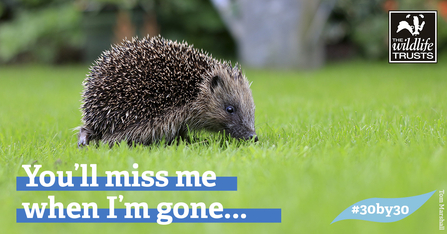National Parks and Areas of Outstanding Natural Beauty Areas (AONBs) are recognitions of landscape value and do not confer protection on wildlife. Many of these areas are actually severely depleted of wildlife because of overgrazing, poor management or intensive agricultural practices. Meanwhile, around half the Sites of Special Scientific Interest - which really are designated to protect biodiversity - are in a poor state and suffering wildlife declines.
Response to the Prime Minister’s commitment to 30% of land for biodiversity
Craig Bennett, CEO of The Wildlife Trusts is urging the Government to deliver real change in order to save and protect our wildlife: “We need to see a much greater level of action on the ground to deliver on the ambition set out by the Prime Minister, and to put nature into recovery. This means rescuing the wildlife sites currently in decline, while also making more space for nature through a new wildlife designation called Wild Belt, specifically aimed at putting nature in recovery – protecting and connecting nature right across the country.”
“We have a bold vision for nature recovery,” said Colin Preston CEO of Shropshire Wildlife Trust: it involves large-scale habitat restoration (for example, the Back to purple heathland restoration project on the Stiperstones); connecting good areas of habitat (such as the pioneering Stepping Stones scheme between the Long Mynd and the Stiperstones) and ensuring the flourishing of nature within our towns, so that people can enjoy wildlife close to their own homes.

Today The Wildlife Trusts launched 30 by 30, a public appeal to raise £30 million to start putting nature into recovery across at least 30% of land and sea by 2030. Making more space for nature to become abundant once again will give our struggling wildlife the chance to recover and also restore beautiful wild places - places that store carbon and help to tackle the climate crisis.
